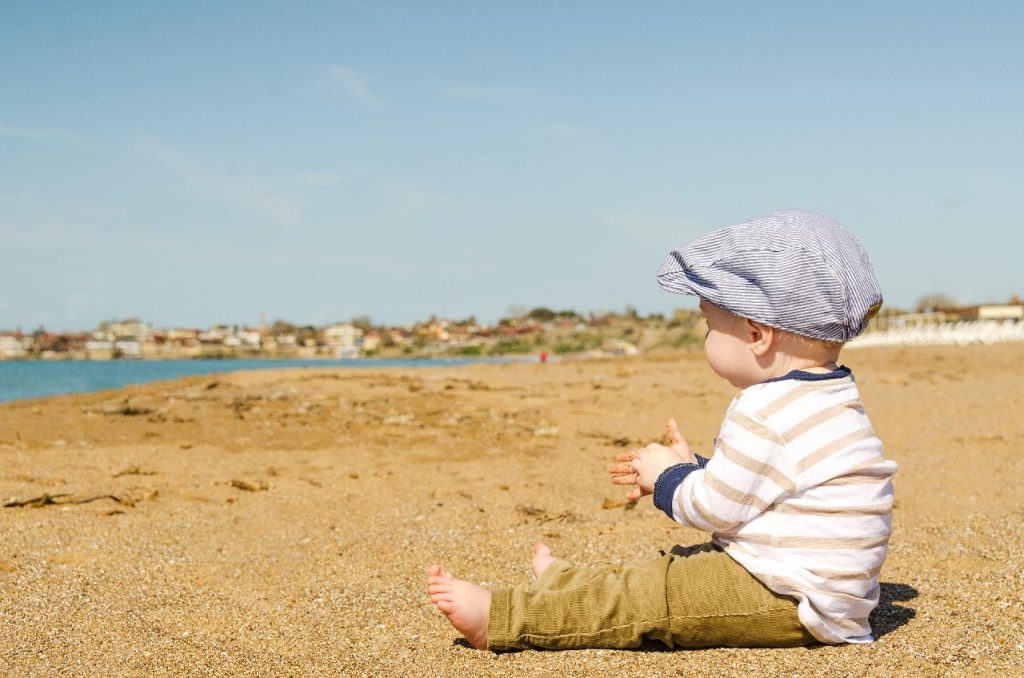
When you think back to your childhood, can you bring up your first memory?
Chances are, nothing comes to mind from a time before you were two or three, and then only a fragment of memory may be there.
For most of us, memories are not cemented until we are a bit older, but there are some real ways you can help your child hold on to precious early memories – and build on them to create lasting ones.
While kids do retain memories in infancy, they are short-lived, enabling them to take in enough information to progress in their development.
Of course, they remember the people in their lives and build on simple memories to acquire skills like communication.
But what you and I often think of as “memories” are those events and special times that we look back on with fondness.
Around the age of two and three, as kids learn to expand their language and communication skills, memory starts to become more complex.
They may remember repeated experiences, but like in infancy, are still mostly using these memories to expand their development through exploration of the people and world around them.
We may want them to remember those first few birthday parties or people – like grandparents – who passed away when they were small.
But in order to really cement short-term memories into long-term ones, we may have to give them a little help with some techniques experts say really do help memories to stick around.
Since one of the most fundamental aspects of learning and development in these early years is language, this can also be a crucial building block to retaining early childhood memories.
We can help toddlers and preschoolers to tie memories to people and places by discussing them frequently.
For example, we can help a child remember a first trip to the zoo or flying on a plane by talking about it over and over again. “Remember when we flew on the airplane to visit Grandma and you took your pink backpack and your teddy?”
These types of conversations, as well as tying an experience to a person or object, helps the brain form the connections needed to retain memory by making associations.
Talking about an experience (like a special trip or celebration) while it’s happening, as well as recounting stories of the special time afterward can help keep early memories intact.
It also helps to take part in activities your child is interested in. If they love dinosaurs, they may remember a trip to a natural history museum more than one to an art museum. If they love animals, they may be more interested in talking about a trip to the zoo and can associate their zoo-themed toys to the experience.
Parents know all-too-well: You can’t have a special day out without bringing home some kind of souvenir. While they may be irresistible to kids (you know they want everything from the gift shop), the money is also an investment in their memories.
Souvenirs can be a physical reminder of a special trip, vacation, or event and can help them to talk about and retain memories tied to that place or time.
This is especially important for younger children who are learning the concept of time – past and present – and how they are linked to form their life story.
For older kids, something as simple as a book or brochure from a trip you took can be an important way to help them retain a special memory.
If they’re studying a certain topic in school — for example, a historical period — visiting a local monument or museum from that time will further cement their memory. Reading stories on the subject to them will not only foster their interest in the topic for school, but will help cement the memory of the trip you took associated with it.
And linking memories with objects isn’t just about experiences; it’s about people too.
A favorite gift from a grandparent or family friend you don’t see often can be a conversation starter. Tell stories about that person and talk about special times they shared with that child, both recently and in the past when they are playing with that item.
All children learn and retain memory in different ways. Some are visual learners, some auditory, some tactile.
By identifying what you think is your child’s learning style at an early age, you can help them to retain memory by using that approach.
Do they remember sounds they heard more than sights they saw? Then you can use that auditory memory to build on discussion of the entire experience.
And smell is always an important building block to memory. The olfactory area of the brain, which enables and processes our sense of smell, is directly connected to the part of the brain that stores memory.
No matter what your child’s learning style, explaining and experiencing things by using all five senses will further cement an important memory.
We all know that it’s difficult to remember something long-term if we don’t repeat the experience. That is why practice and repetition are the keys to learning and memory.
It’s true of both kids and adults — the more often we do something, the more lasting the memory.
Creating cherished memories should always be fun. No matter what your child experiences during their early years, talk about it. Read about it. Draw a picture, act it out, or sing a song.
And repeat the experience and conversations over and over again.
Making experiences multi-sensory and revisiting special times often through conversation, stories, and photos will help keep those memories alive for a lifetime.
